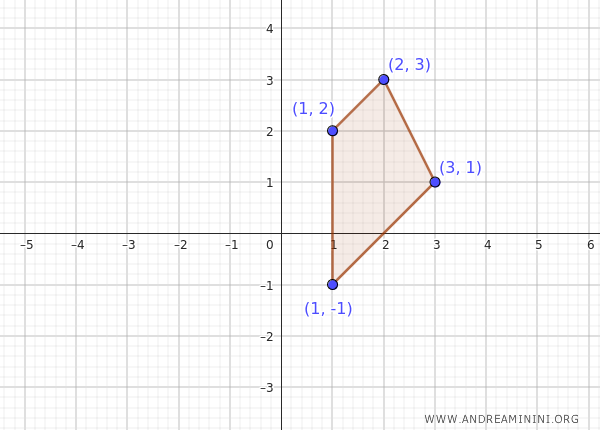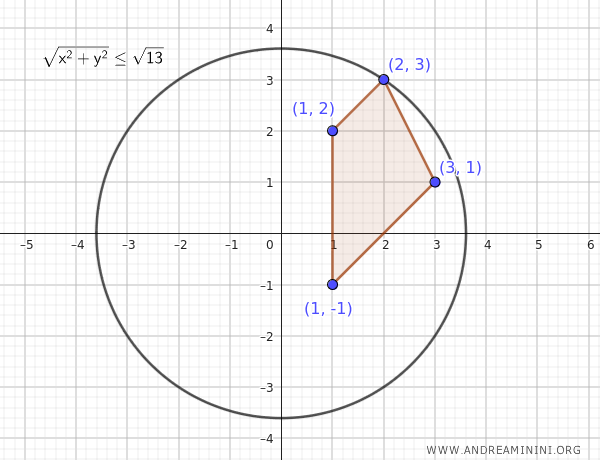Bounded Set in R² (the Plane)
A set \( A \) in the Cartesian plane \( \mathbb{R}^2 \) is called a bounded set if there exists a sufficiently large circle centered at the origin (i.e., the point \( (0,0) \)) that can completely enclose the set \( A \).
This means there is a number \( M > 0 \) such that, for every point \( (x,y) \) in the set \( A \), the distance from these points to the origin, calculated as \( \sqrt{x^2 + y^2} \), is always less than or equal to \( M \).
$$ \sqrt{x^2 + y^2} \le M $$
In other words, \( A \) is contained within a circle of radius \( M \) centered at the origin.
If such an \( M \) can be found, then the set \( A \) is bounded.
If no such \( M \) exists, then \( A \) is unbounded.
A Practical Example
Consider a set of points in the Cartesian plane, for example, a set \( A \) consisting of the points \( A = \{ (1, 2), (2, 3), (3, 1), (1, -1) \} \).

Now, let’s determine whether this set is bounded.
To do this, we need to check if there exists a circle centered at the origin that can enclose all the points in the set \( A \).
We calculate the distance from the origin for each point in the set \( A \):
- For the point \( (1, 2) \): $$ \sqrt{1^2 + 2^2} = \sqrt{1 + 4} = \sqrt{5} \approx 2.24 $$
- For the point \( (2, 3) \): $$ \sqrt{2^2 + 3^2} = \sqrt{4 + 9} = \sqrt{13} \approx 3.61 $$
- For the point \( (3, 1) \): $$ \sqrt{3^2 + 1^2} = \sqrt{9 + 1} = \sqrt{10} \approx 3.16 $$
- For the point \( (1, -1) \): $$ \sqrt{1^2 + (-1)^2} = \sqrt{1 + 1} = \sqrt{2} \approx 1.41 $$
Among these distances, the largest is \( \sqrt{13} \approx 3.61 \).
This means that all the points in the set \( A \) can be enclosed within a circle of radius \( M = \sqrt{13} \approx 3.61 \) centered at the origin.
$$ \sqrt{ x^2 + y^2 } \le \sqrt{13} $$
Since such a radius \( M \) exists, we can conclude that the set \( A \) is bounded.
In other words, all the points in \( A \) can be enclosed within a circle centered at the origin with a radius of \( \sqrt{13} \).

This is a practical example illustrating how to determine whether a set of points in the plane is bounded.
Note: If we consider a set with points that extend infinitely far from the origin, such as all the points along a line that does not pass through the origin, it would be impossible to find a circle that contains all of them, and the set would be unbounded.
And so forth.
